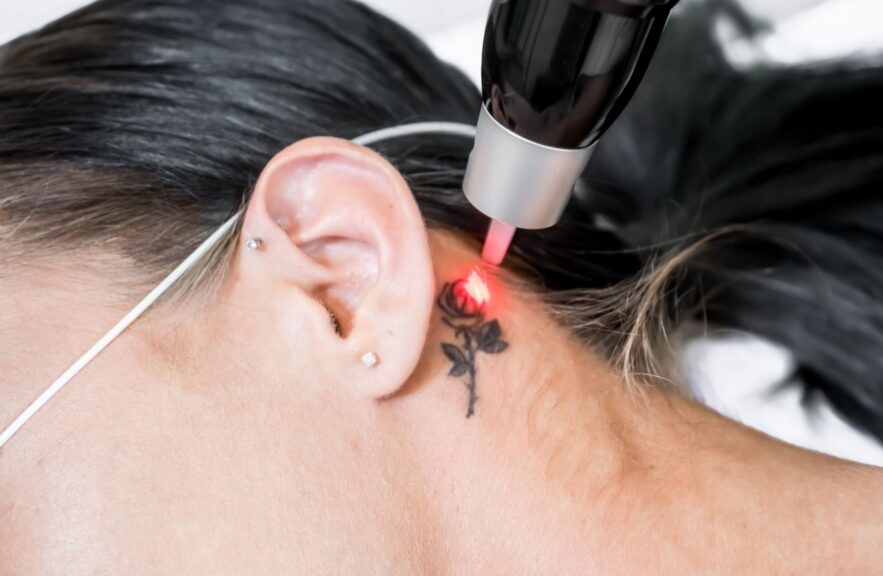Tattoos, once seen as permanent expressions of identity or art, are increasingly being reconsidered. Life circumstances change, and what once seemed meaningful may no longer align with who we are. Whether it’s a faded design, a name from the past, or a professional necessity, many individuals are now seeking ways to part ways with their ink. Laser tattoo removal has emerged as a highly effective and safe method for those aiming to achieve a tattoo-free future without resorting to invasive surgeries or less effective treatments.
How Laser Tattoo Removal Works:
Laser Tattoo Removal in Dubai (إزالة الوشم بالليزر في دبي) works by emitting pulses of highly concentrated light into the skin, where the tattoo pigment absorbs the light and breaks into tiny particles. These fragmented particles are then gradually eliminated by the body’s immune system over several weeks. Different wavelengths are used to target different colors of ink, making the process adaptable for multicolored tattoos. Modern Q-switched and picosecond lasers have greatly enhanced the speed and precision of this technique, allowing for better results with fewer side effects.
Treatment Timeline and Expectations:
Laser tattoo removal is not a one-time procedure. The complete removal of a tattoo often requires multiple sessions spaced several weeks apart to allow the skin to heal and the body to flush away the pigment. The number of sessions depends on several factors including the age, size, color, and location of the tattoo, as well as the individual’s skin type and immune response. While some tattoos can be significantly faded after a few treatments, others may require 8-12 sessions or more for optimal results.
What Makes Some Tattoos Harder to Remove?
Not all tattoos respond to laser treatment in the same way. Professional tattoos usually go deeper into the skin and use more ink, making them harder to remove compared to amateur tattoos. Color also plays a major role—black ink is the easiest to target, while lighter colors like yellow, green, and turquoise can be more resistant. Inks that contain metallic compounds may also respond differently, and tattoos on areas with less blood flow, such as the lower legs or hands, can take longer to heal and fade.
Pain and Recovery: What to Expect
The pain associated with laser tattoo removal is often compared to the sensation of a rubber band snapping against the skin or a series of hot pinpricks. While discomfort is a part of the process, it is usually tolerable and short-lived. After each session, the treated area may appear red, swollen, and sensitive—similar to a sunburn. Proper post-treatment care, such as keeping the area clean, avoiding direct sunlight, and not picking at scabs, is crucial for optimal healing and to minimize the risk of scarring.
Skin Type and Laser Tattoo Removal:
Different skin types react differently to laser tattoo removal, making personalization of treatment important. People with darker skin tones may be more prone to side effects such as hyperpigmentation or hypopigmentation, where the treated area becomes either darker or lighter than the surrounding skin. However, with advancements in technology, newer laser systems can be adjusted to accommodate a wider range of skin tones safely and effectively. It’s essential to understand these variations in order to set realistic expectations for the treatment process and outcomes.
Psychological and Emotional Benefits:
Removing a tattoo is not just a physical transformation; it often carries deep emotional and psychological significance. For many, tattoo removal offers a sense of relief, closure, or freedom from a past identity or phase of life. It can enhance self-esteem, support career changes, or simply align better with one’s current lifestyle. The emotional liberation that comes with letting go of an unwanted tattoo is a powerful motivator for individuals pursuing a tattoo-free future.
The Future of Laser Tattoo Removal:
As technology continues to advance, laser tattoo removal is becoming faster, safer, and more effective. Picosecond lasers, for example, use ultra-short pulses to shatter ink particles more efficiently, often resulting in fewer sessions and better clearance of stubborn colors. Ongoing research into ink composition and laser technology promises even greater precision in the future. With these advancements, the dream of a tattoo-free future is becoming more accessible than ever before, offering hope and a fresh start to those ready to erase the ink and rewrite their story.
Conclusion:
Laser Tattoo Removal in Dubai (إزالة الوشم بالليزر) represents more than just a physical transformation—it symbolizes change, growth, and new beginnings. With modern advancements in laser technology, removing unwanted tattoos has become safer, more precise, and increasingly effective for all skin types and ink colors. While the journey to a tattoo-free future requires time, patience, and care, the results can be life-changing. Whether driven by personal, professional, or emotional reasons, individuals now have a reliable option to reclaim their skin and move forward without the marks of the past. The future of tattoo removal is bright, offering a clean slate for those ready to start anew.






